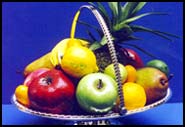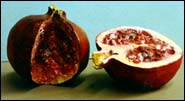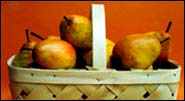
|
|

|
Making Faux Food
Each piece begins with the real object. A plaster mold is made in sections.
When the plaster is dry, the sections are pried apart and the object removed.
This leaves a negative cavity revealing all details and textures of the
object in reverse. A “pour hole“ is drilled into the mold, and
then the mold is filled with liquid clay called slip.
Since plaster is porous, the moisture in the clay is absorbed, leaving a thickened skin. The remaining liquid clay is poured out of the mold leaving the object hollow.
As the clay dries, it gradually shrinks away from the surface of the mold. The mold is opened, and the object is removed. Seam lines are cleaned up, and the pour hole is covered over. A tiny pin hole is inserted into the object, so the trapped air will not explode in the firing. After drying, the objects are put in the kiln and fired to 1800º Fahrenheit.
The objects are then individually painted in acrylics to give a unique appearance to each one.
All objects can be used in museum installations. The objects are made in acrylic, painted earthenware, poly resins or water-based wood putty - which are safe and non-invasive to any delicate surface.
Any item of special interest can be created for you. Please call 713-528-4577 for information and pricing.


